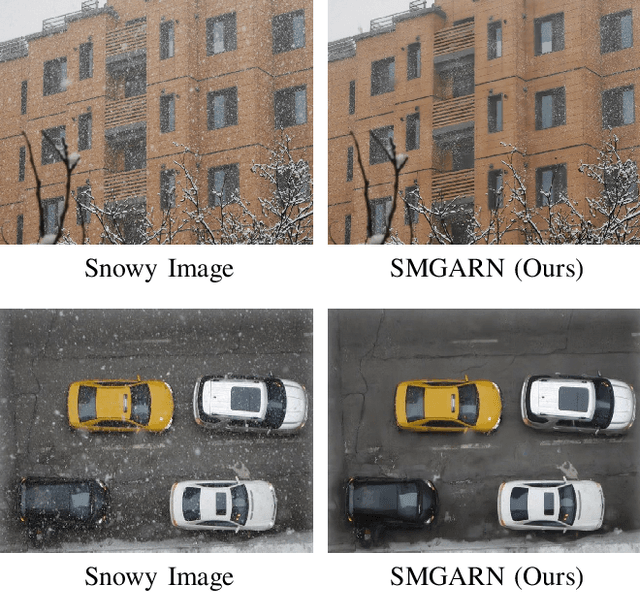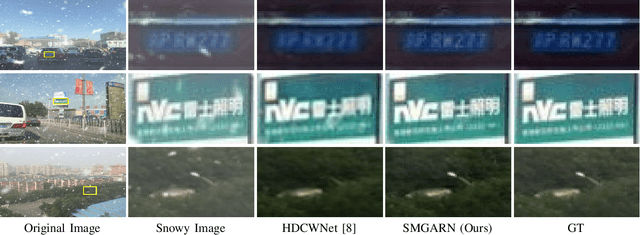Snow Mask Guided Adaptive Residual Network for Image Snow Removal
Paper and Code
Jul 11, 2022



Image restoration under severe weather is a challenging task. Most of the past works focused on removing rain and haze phenomena in images. However, snow is also an extremely common atmospheric phenomenon that will seriously affect the performance of high-level computer vision tasks, such as object detection and semantic segmentation. Recently, some methods have been proposed for snow removing, and most methods deal with snow images directly as the optimization object. However, the distribution of snow location and shape is complex. Therefore, failure to detect snowflakes / snow streak effectively will affect snow removing and limit the model performance. To solve these issues, we propose a Snow Mask Guided Adaptive Residual Network (SMGARN). Specifically, SMGARN consists of three parts, Mask-Net, Guidance-Fusion Network (GF-Net), and Reconstruct-Net. Firstly, we build a Mask-Net with Self-pixel Attention (SA) and Cross-pixel Attention (CA) to capture the features of snowflakes and accurately localized the location of the snow, thus predicting an accurate snow mask. Secondly, the predicted snow mask is sent into the specially designed GF-Net to adaptively guide the model to remove snow. Finally, an efficient Reconstruct-Net is used to remove the veiling effect and correct the image to reconstruct the final snow-free image. Extensive experiments show that our SMGARN numerically outperforms all existing snow removal methods, and the reconstructed images are clearer in visual contrast. All codes will be available.
 Add to Chrome
Add to Chrome Add to Firefox
Add to Firefox Add to Edge
Add to Edge